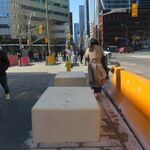Northern Light
Superstar
What I mean is, much city infrastructure is paid for off of the land tax base, development charges, land transfer taxes, etc. TIF is just a speculative program that builds the infrastructure of today with the tax base of tomorrow's development. It's speculative, and therefore a bit sketchy, because we don't really know how much revenue will be generated, as the development hasn't occurred yet. However, it's still using property taxes to build stuff. I'm not actually too worried about this speculation, as property values in Toronto have consistently risen over the long term. That land would get developed. I'm afraid we need to look at more of these kinds of funding tools to pay for infrastructure. City bonds are another means. If any city can implement these kinds of financing tools, it's Toronto, the centre of finance in Canada.
TIF isn't merely speculative. You are aware, I take it, that TIF is used to borrow funds or accrue debt, by using future revenue as securitization, in essence.
That's over simplifying, but roughly correct.
You may also know that the City of Toronto's debt is guaranteed as-of-right by the province, as municipalities are 'creatures of the province' meaning cities in Canada can't go bankrupt.
Given that Ontario is already highly indebted, not to the point of jeopardy, but surely to the point where one doesn't wish to add to those debts....TIF is non-starter.
***
That would equally rule out municipal bonds, as the City of Toronto has already reached (within its 10 year budget) its self-imposed debt-limits, which are entirely reasonable.
***
That doesn't mean additional 'revenue tools' or taxes can't be considered...............but one must first consider the shortfall in budgets as they exist today.
With no buried Gardiner (or underground Allen Expressway) ...... in fact, with no DRL, and no Crosstown-East...........there are Billions of below-the-line (unfunded) items in the City's 10-year plan.
That means items, which for the most part, are very necessary (re-signalling the B-D line, new rolling stock in 10 years, more debatably, platform-edge doors for our subway system) and many non-transit expenditures as well.
Once you've funded those, how much more appetite will there be for fees/taxes? If one assumed that provincially the needs meant a hike of the HST to 15%, and municipally a toll on the DVP/Gardiner of 30c per Km (or about $5 per direction for the typical user).........
Whatever ever tolls or other taxes you wish to impose will go on top of that.
That might be justifiable...............but is it credible?





